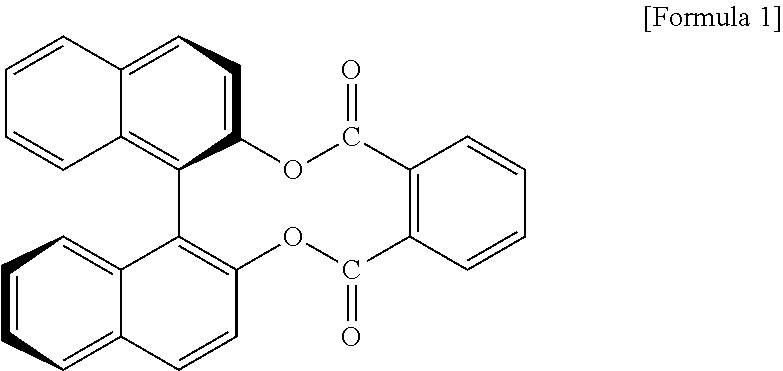Optical film and optical laminate using same
a technology of optical laminates and optical films, applied in the field of optical films, can solve the problems of difficult removal of sebum or the like adhesion to a multi-layer film, peeling of the multi-layer film, and difficulty in obtaining reflection abilities comparable to an interface with the outside air, so as to minimize the polarity of a polarizing element due to circular polarization light
- Summary
- Abstract
- Description
- Claims
- Application Information
AI Technical Summary
Benefits of technology
Problems solved by technology
Method used
Image
Examples
example 1
[0063]Using the prepared coating liquids (R1) and (L1), each of the light-reflecting layers was prepared by the procedure indicated below, and these were then laminated to prepare laminates having the light-reflecting layers employed in the present invention. PET film (no undercoat layer) manufactured by Toyobo Co. Ltd. was used as a plastic substrate.
(1) Using a wire bar, each coating liquid was applied at room temperature to the PET film, to a post-drying film thickness of 4 μm.
(2) Product was heated for 5 minutes at 150° C. to eliminate the solvent and produce a cholesteric liquid crystal phase. Next, product was irradiated with UV for 5-10 seconds at 120 W output from a high-pressure mercury lamp (manufactured by Harison Toshiba Lighting Corp.), and the cholesteric liquid crystal phase was fixed, to obtain the light-reflecting layer.
(3) The light-reflecting layers (R1) and light-reflecting layers (L1) prepared in steps (1) and (2) were laminated together from the light-reflectin...
example 2
[0072]A laminate of the light-reflecting layers employed in present invention were prepared by the same operation as in Example 1, except for using the prepared coating liquids (R2) and (L2). The center reflection wavelength of the light-reflecting layer (R2) and the light-reflecting layer (L2) was 540 nm. Next, the laminate was laminated to a polarizing element in the same way as in Example 1, to obtain an optical film of the present invention. The optical film was measured as to polarization in the same manner as in Example 1; the result was polarization of 98.1%.
example 3
[0073]A laminate of the light-reflecting layers employed in present invention were prepared by the same operation as in Example 1, except for using the prepared coating liquids (R3) and (L3). The center reflection wavelengths of the light-reflecting layer (R3) and the light-reflecting layer (L3) were 650 nm and 630 nm, respectively. Next, the laminate was laminated to a polarizing element in the same way as in Example 1, to obtain an optical film of the present invention. The optical film was measured as to polarization in the same manner as in Example 1; the result was polarization of 98.3%.
PUM
 Login to View More
Login to View More Abstract
Description
Claims
Application Information
 Login to View More
Login to View More - R&D
- Intellectual Property
- Life Sciences
- Materials
- Tech Scout
- Unparalleled Data Quality
- Higher Quality Content
- 60% Fewer Hallucinations
Browse by: Latest US Patents, China's latest patents, Technical Efficacy Thesaurus, Application Domain, Technology Topic, Popular Technical Reports.
© 2025 PatSnap. All rights reserved.Legal|Privacy policy|Modern Slavery Act Transparency Statement|Sitemap|About US| Contact US: help@patsnap.com



